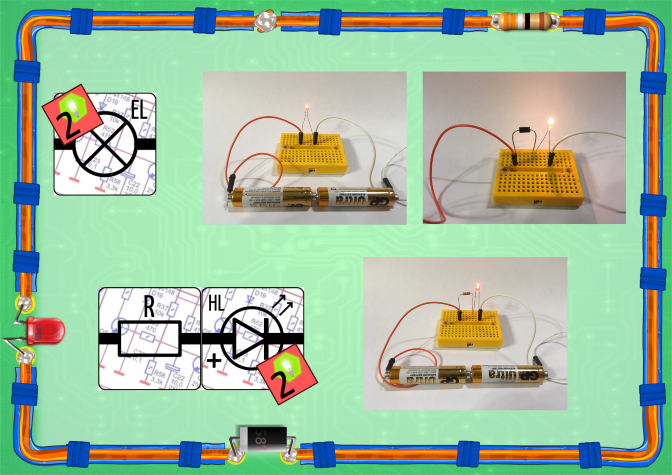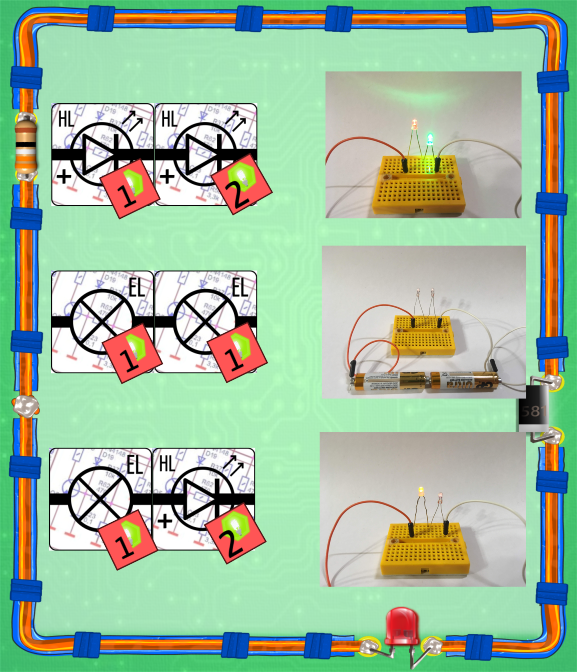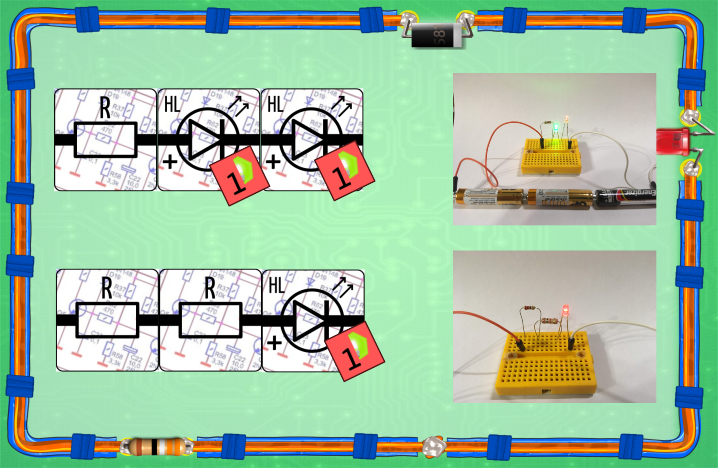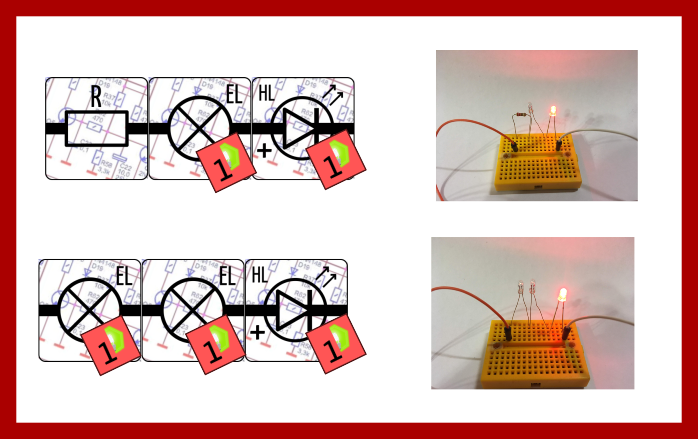Cardboard engine for an electrical board game. How we brought it closer to reality
In the summer of 2018, I already wrote about how we created the board electrical game "Do Not Short Circuit!" , which was then being prepared for publication. At the moment, work on the game is completed, it is successfully raising funds for publication on the CrowdRepublic site , but we decided to talk about its “engine”, its creation and the problems we encountered while doing this.
It would seem that complicated. Battery, wires, LEDs and bulbs - collect the chain, see what is lit, get points and penalties if you short circuit plus to minus without load. The resistor reduces the number of points, the diode passes or does not pass current in a certain direction, the circuit is "considered" from plus to minus. But...
The game is for children (8+ recommendation) and it is necessary that children (and adults) do not break the brain in determining the efficiency of the circuit. And I had to go to simplify the rules. The main thing that had to be sacrificed and where the “engine” diverges from the real chain is parallel and serial connections. Usually, players create chains where all the elements are arranged in series, but alas in the tests they managed to connect the bulbs in parallel. Then the elements receive the same voltage and since we have the number of points given for the "power of the glow", then points had to be calculated differently than with a serial connection. It would seem nothing complicated, but as soon as resistors and LEDs appear in the circuit, the brain begins to "boil".

It was decided that all lockable chains “unfold” in sequential. This allowed both to increase the speed of the game and to remove heated debates about who won and why.
Also, the question arose about the denominations of the elements. What are the resistors? What is the voltage of diodes and lamps? What is the voltage in the circuit? And here again the assumptions come into force - the voltage in the gaming "network" is 3V, the bulbs are also 3 volt, the diodes are 2 volts, the resistors are "1-ohm spherical in vacuum". Neglect the characteristics of the diode - we believe that it passes or does not pass current. It remains only to develop clear and logical rules for scoring. Here, I wanted more reality and for this we began to check everything on prototyping boards.
With bulbs and an LED, everything is simple - a light bulb in a circuit at a rated voltage of 2 points, an LED without a resistor burns out, with a resistor it also gives 2 points.

Two identical bulbs that are turned on in sequence will burn in half the power - we give them two points. A bulb + LED? Two LEDs in series? And if you add another resistor? We consider one of the circuit elements resistive to another. Then the bulb + resistor gives 1 point (the voltage drop on the bulb is taken twice), the LED + bulb gives 1 + 2 points, two LEDs gives ... But here it is not 2 + 2. In a real circuit, the second LED will “shine” more weakly, therefore we accept that two consecutive LEDs do not burn out and the player receives 1 + 2 points. And all this is confirmed by the breadboard model.

The third element in the chain is calculated similarly. The resistor plus two LEDs give approximately the same glow on both - 2 points to the player. Two resistors + LED also give a "dim" glow - 1 point to the player.

The problems began with the simultaneous connection of several light bulbs and an LED or the appearance of a resistor-bulb-LED chain. They did not work, as the logic of the cardboard engine required

As you can see, the LED shines brightly (and the situation was expected as in the case with two resistors and an LED), and with the resistor the lamp does not light up, unlike the LED that shines "for 2 points". The logic of the engine required to get dimly glowing bulbs and LEDs in both situations and, accordingly, 1 point for each lit element. With a scratch we accept this assumption.
In order not to lead players into the jungle of computing a chain of more than 3 elements (diodes, as you remember, we only play the role of a “gate” and we ignore them in chains as resistive elements), we considered it incapable of lighting our luminous elements and we won’t accrue victory points for them.
As a result, the luminosity table turned out to be as follows:

Not in all aspects is real, but with a sufficiently clear logic that allows you not to sit with open rules constantly.
Later, we added transistors (plays the role of a key and does not influence resistively) and a photodiode (plays the role of a reversible diode, which passes current only when a light is on it next to the circuit) and a reed switch (a key that is activated by a magnet lying next to the field), but these elements as well as diodes do not affect the scoring.
As developers, we sometimes try to write "complicated" rules for playing with more realistic behavior of cardboard chains, but we ask ourselves - is it necessary?
